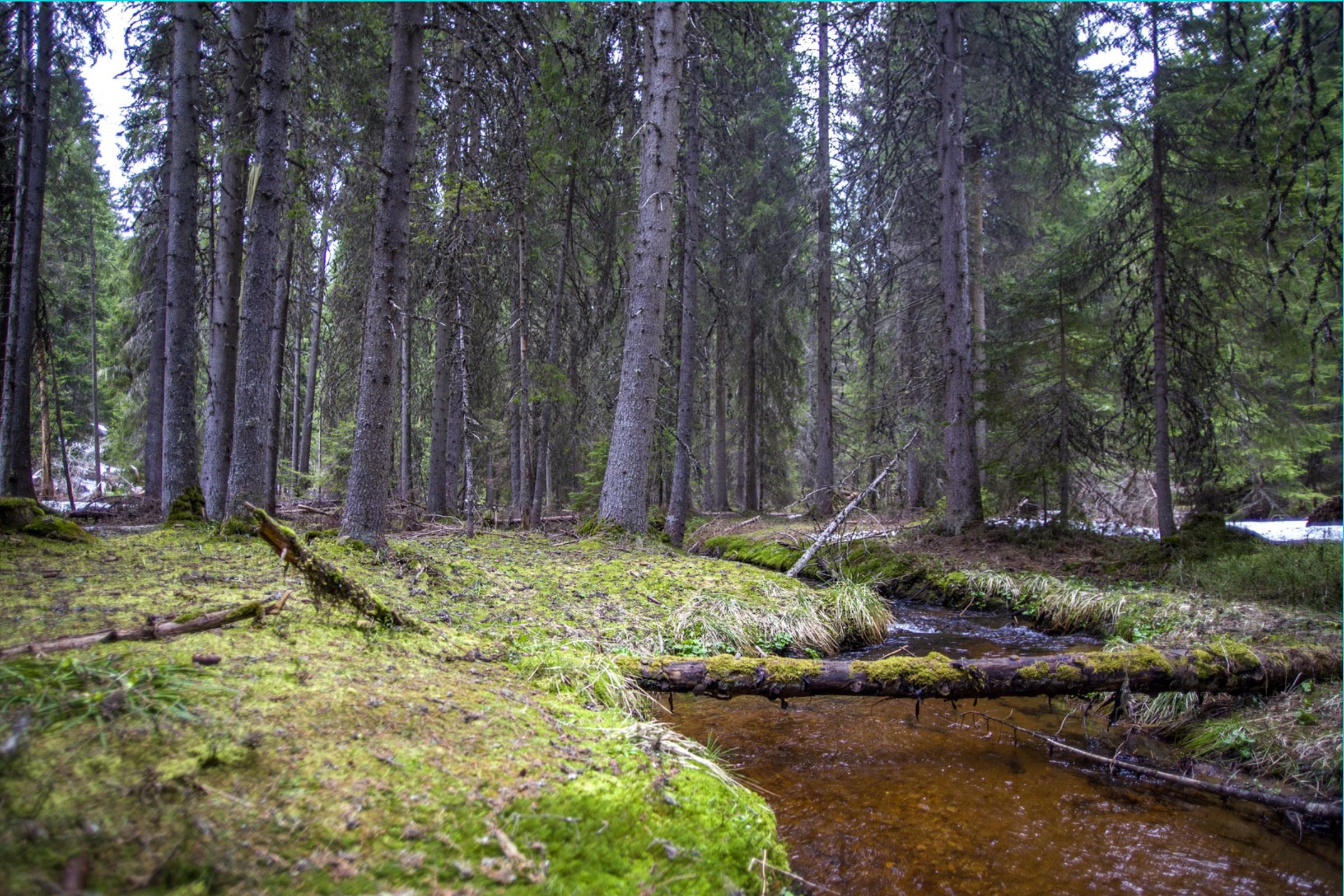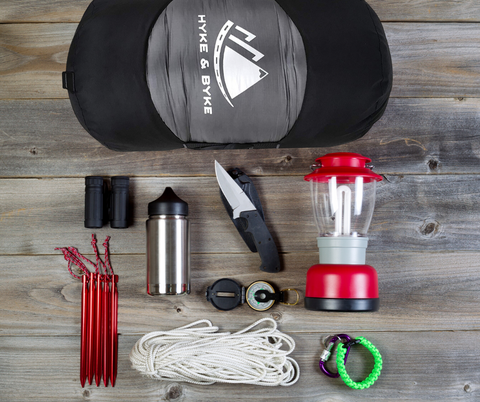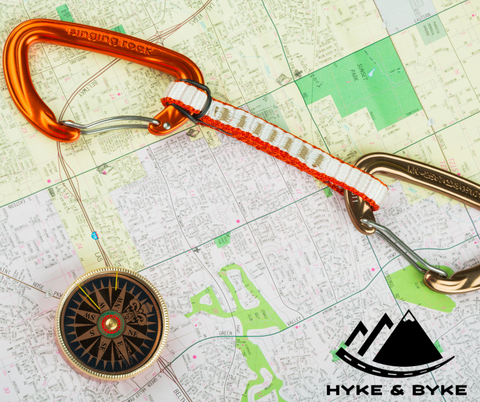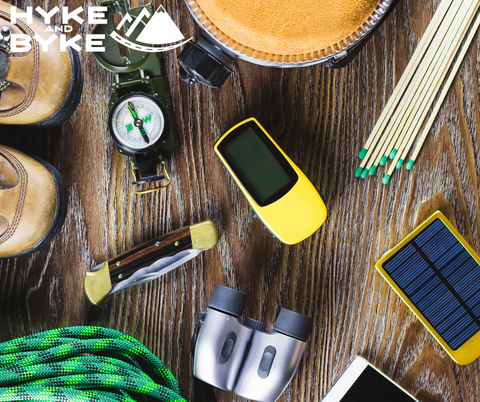If you’re an experienced backpacker, you know the Ten Essentials for hiking. So, do you know what gear you’d grab if you had to evacuate immediately in the event of an emergency that requires you to get away from your home? If the thought of “grab-n-go” makes you a little nervous, consider preparing a “bug-out bag”.
Jump toEssential Gear
What is a bug-out bag?
Your basic bug-out bag is a quick-evacuation bag that provides survival supplies needed for about 72 hours. As backpackers, of course, we should be able to stretch that several days longer. At any rate, the goal is to keep this bag ready to go in the event of an emergency where you need to leave your home at a moment’s notice. A well-equipped bug-out bag could save your life in an emergency.
Different emergencies will require different items; a weather crisis will not need the same auxiliary supplies as a geopolitical crisis. The necessary gearmay go far beyond the Ten Essentials for survival. To customize your bag, ask yourself some guiding questions:
- What possible emergencies could I face?
- Where am I going and what is the environment like?
- How long will I be gone?
- Will there be help available?
- Who will be with me?
Preparation = Survival.
Luckily, most of your basic bug-out needs can be met with the same gear you use for backpacking! Focus on theTen Essentials to help you build out your base bag and you will have what you need to help you survive.
Building your Bag
Most of your backpacking/bug-out crossover items can be purchased on a budget. Be smart about it though—if your life depended on it, you would want reliable gear. Purchase quality items that fit into your budget. It’s not about saving money, it’s about saving your life.
The best possible basic bug-out bag will mirror a thru-hiker’s pack, with some exceptions. Thru-hikers often “shake down” the items they determine are unnecessary after their first several days hiking; however, some of theseshake-down items will need to stay with you in an emergency situation.
Aside from your food and water, a backpacker should strive to keep their bug-out bag base weight under 20 lb. (approximately 9 kilograms) so you can add more emergency-specific gear without breaking your back. Alighter pack will also help you move more quickly when you have to get out ASAP.
Choosing a Bug-out Location

You need to know where you’re headed and how long it will take you to get there, which means your bag and its contents will need to get you there. If you plan to travel on foot, you need to get far enough away from the epicenter of the disaster to keep you safe.
Your location also needs to have available resources for you to continue your survival plan and establish a base camp. You should look for a remote, concealed location near running water. If you expect to hunker down for a while, make a plan to bring or store additional supplies for your prolonged or permanent relocation.
Check out this guide to help you choose aBug-Out Destination.
If you don’t have a bug-out plan, get started. When forming your plan, make sure to consider a plan B. A plan B might include additional gear that is not included in this list of essentials.
Essential Gear
As you review the essential gear below, also use thisCustomizable Gear Checklist to help you design your bag. You don’t want to forget anything.
Backpack
For 72 hours, the average person will probably need a 45-liter pack to pack everything they need to feel prepared in an emergency. Choose a trusty, lightweight backpack. Hiking backpacks are suitable for a bug-out bag, but make sure to choose a durable bag that will be comfortable and make your essentials easy to access. Your bag alone should not weigh more than 2-3 pounds (approx. 1 kg). Top-rated backpacks have internal frames and suspension systems to support the load.
If you don’t already have a pack that you want to use, check out these tips forHow to Choose the Right Backpack.
Tactical-style packs are also popular for bug-out bags because they are durable, versatile and compact. If you’re curious about tactical packs, check out this guide onHow to Choose a Tactical Backpack.
Shelter and Protection

Like any backpacker, make sure you have the basics to take shelter in an emergency situation. In order to survive, you’ll need to protect yourself from the elements.
Whether you anticipate mild, cold or stormy weather, you’re going to want the very best possible gear at the most budget-friendly price point. May we suggest thisultralight tent and this800-fill sleeping bag for even the coldest, rainiest nights?
Part of survival includes resting your body and sleeping as well as you can. Bring a sleeping bag with a temperature rating that’s lower than you’ll think you’ll need. Make sure to read up onsleeping bag temperature ratings if you aren’t sure where to start (quick tip: the rated temperature is usually the lower extreme). You don’t want to be out there without a warm bag.
You’ll also need to carry a sleeping pad to preserve your warmth and your back. Choose a comfortable, lightweight insulated pad that will never let you down, and make sure to bring a patch kit.
Food and Cook Kit
Staying healthy is your ultimate tool for survival, so make sure to pack durable food that provides maximum nutrition. Know what your body needs so you can focus on balanced sources of protein, minerals, vitamins, fats, and carbs.
- Freeze-dried backpacker meals can have a shelf life of 5-30 years, and they’re pretty delicious. We likeGood To-Go andMountain House. Just add water and zip up the bag to cook.
- Bring a pot to boil water/eat from; you can use one pot for both. It’s survival, not a dinner party.
- Camp stove and fuel. Bring whatever you’re most comfortable with, because you don’t want to be learning the ropes of a brand new stove in an emergency situation. Stove systems like aJetBoil are perfect for beginners, plus the pot is included.
- Long spork. Whether you’re eating from a bag (freeze dried meals) or your camp pot, you’ll appreciate the extra long handle.
If you’ll be out there longer, or if you don’t plan to bring along cooking supplies, consider supplementing with no-cook foods that are high in fat and protein like jerky,pemmican, and your favorite nuts. Food is the main variable when staying outdoors for longer periods, so think about having a few different “food loads” on hand for different durations that you can grab on the way out. The longer you need, the denser your calories should be and the less “gourmet” the food will ultimately need to be.
Water
You already know how critical it is to have sufficient water. Depending on the emergency scenario, water sources could become unavailable or unsanitary. Prepare yourself the best you can with basics for water storage, filtration and purification.
- At least two water bottles
- One water bottle to drink from, approximately 32 oz.
- Choose a metal bottle or a Nalgene
- One bottle to fill from found water sources – The SmartWater 1L bottle is perfect for this, and a popular choice for thru-hikers everywhere
- If you want to bring a hydration reservoir, use it for storage only, and not to drink from. When drinking through a reservoir hose, it’s hard to keep track of how much water you’ve been drinking. You could run out without even realizing it.
- Sawyer Mini – This is a water filter that you screw onto your SmartWater bottle after filling and squeeze the filtered water into your drinking bottle/reservoir.
- Purification tablets – For extra protection, purification tabletsweigh almost nothing and are totally worth having when the water quality is questionable.
Clothing
When it comes to clothing, there are endless options for any climate and weather condition. Your clothes will need to protect you against the elements—scorching hot, freezing cold, rain, wind, and sun. The key is to make sure you know what you’re preparing for.
An entire separate guide could be written to help you decide. Choose durable options that follow the principles of layering:
Wicking
Baselayers help keep moisture off of your skin, which is important whether is it hot or cold outside. Baselayers with built-in sun protection could also be necessary.
Insulating
Midlayers are your climate control, add them when it’s cool and remove them when it’s warm.
Weatherproof
Your outer layer is meant to keep the elements away from your body. A rain shell is typically your best bet to protect against rain and wind.
Lights and Electronics
Whether you need to see or be seen, bring the right lightweight and long-lasting lighting options, along with the batteries and plugs to keep them charged.
- Headlamp
- Lightweight lantern
- Battery Pack
- Wall plug and USB cords
- Extra batteries if your electronics aren’t rechargeable
- Containers or Ziploc bags to keep everything organized and dry.
Navigation

You’ll need to navigate your way out of the disaster zone, so make sure to bring the necessary navigation tools. Plan a route ahead of time. If you will face power-grid disruptions, you will need to rely on analog-only navigation. Do you know how touse Polaris as a guide?
- Map of the area
- Emergency plan A and plan B
- Compass
- GPS
- Your smartphone if you can bring it.
First Aid/Health
You could get hurt or sick while out in the elements, but you’ll also need to keep up with normal body maintenance. Stay healthy and clean with some basic necessities, but make sure to include the essential hygiene items that are part of your routine.
- First Aid Kit – somepre-made kits are designed for certain scenarios and group sizes
- Necessary medications
- Toothbrush, toothpaste
- Menstrual health needs (bonus! Tampons are a great fire starter)
- Nail clippers
- Insect repellent
- Sunscreen and sunglasses
- Camp suds – ultra concentrated soap so you can wash your hands, your body, and your gear
- Toilet paper or akula cloth
Tools

- One trusty knife for food, survival needs, and even self-defense
- Multitool that includes pliers, a small saw, blades, file and more
- Lighter and a back-up lighter
- Store-bought orhomemade fire-starters
- Duct tape
- Small sewing kit
- Safety pins
- Whistle
- Paracord and pack straps for lashing, attaching, lifting and tying. Mil-spec paracord like those sold byTitan have the benefit of containing tinder, fishing line and snare wire.
Other Essentials
- Pen and paper
- Cash
- Personal documents – bring a USB drive with digital copies of your important documents, and paper copies as well.
- Optional: Additional hunting equipment.
Final Tips
Stay organized
Use Ziploc bags to keep essential items gathered together.
Stay dry
Have arain cover on hand or line your pack with a garbage bag – you’ll be glad you did. If you go with a rain cover, consider using a brightly-colored cover if you will need to be seen or rescued.
Stay ready
Regularly refresh your basic survival skills. Many skills can be learned simply by camping and backpacking. Make sure you can comfortably build a fire, sleep outdoors, and navigate. Keep in mind that your tools are only useful if you know how to use them.
There’s no such thing as The Perfect Bug-Out Bag. There are too many variables to allow for a universal answer that is perfect for all people in all situations. Keep it lightweight and packed with items that meet your Ten Essential needs to survive in the elements. Even when you’re “bugging-out” make sure to Leave No Trace.
What’s in your bug-out bag? Let us know!
PS. Need an affordable, ultralight backpacking tent with a minimalistic footprint? The Yosemite 1P Backpacking Tent is just over 4lbs and packs down to less than 6″ thick. It’s the smallest, lightest tent we make.
And it’s only $79.97.

Check it out Now
Ten articles before and after
Top 10 Best Disc Golf Bags Reviews
Best Drawstring Bags in 2021 Guide
How do you wash a backpack? – Junyuan Bags
How do you stay warm in a sleeping bag? – Junyuan Bags
Can I put sleeping bag in washing machine? – Junyuan Bags
Best Survival Backpacks For 2021 And Beyond
Best Dog Carrier Backpacks for Any Trip
Best Anti-Theft Backpacks in 2021, Stay Safe




 Mobile/What's App/Wechat
Mobile/What's App/Wechat E-Mail
E-Mail ADD
ADD




